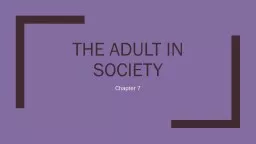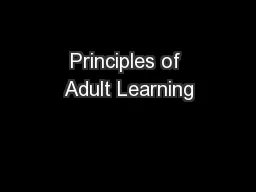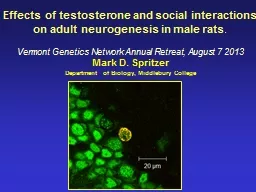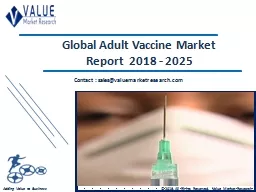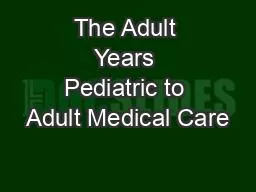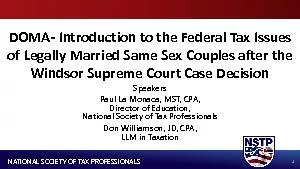PPT-The Adult in society Chapter 7
Author : faustina-dinatale | Published Date : 2018-03-20
Early and Middle Adulthood The patterns of adult males and females in American society are somewhat different For women they enter the labor force take time out
Presentation Embed Code
Download Presentation
Download Presentation The PPT/PDF document "The Adult in society Chapter 7" is the property of its rightful owner. Permission is granted to download and print the materials on this website for personal, non-commercial use only, and to display it on your personal computer provided you do not modify the materials and that you retain all copyright notices contained in the materials. By downloading content from our website, you accept the terms of this agreement.
The Adult in society Chapter 7: Transcript
Download Rules Of Document
"The Adult in society Chapter 7"The content belongs to its owner. You may download and print it for personal use, without modification, and keep all copyright notices. By downloading, you agree to these terms.
Related Documents

